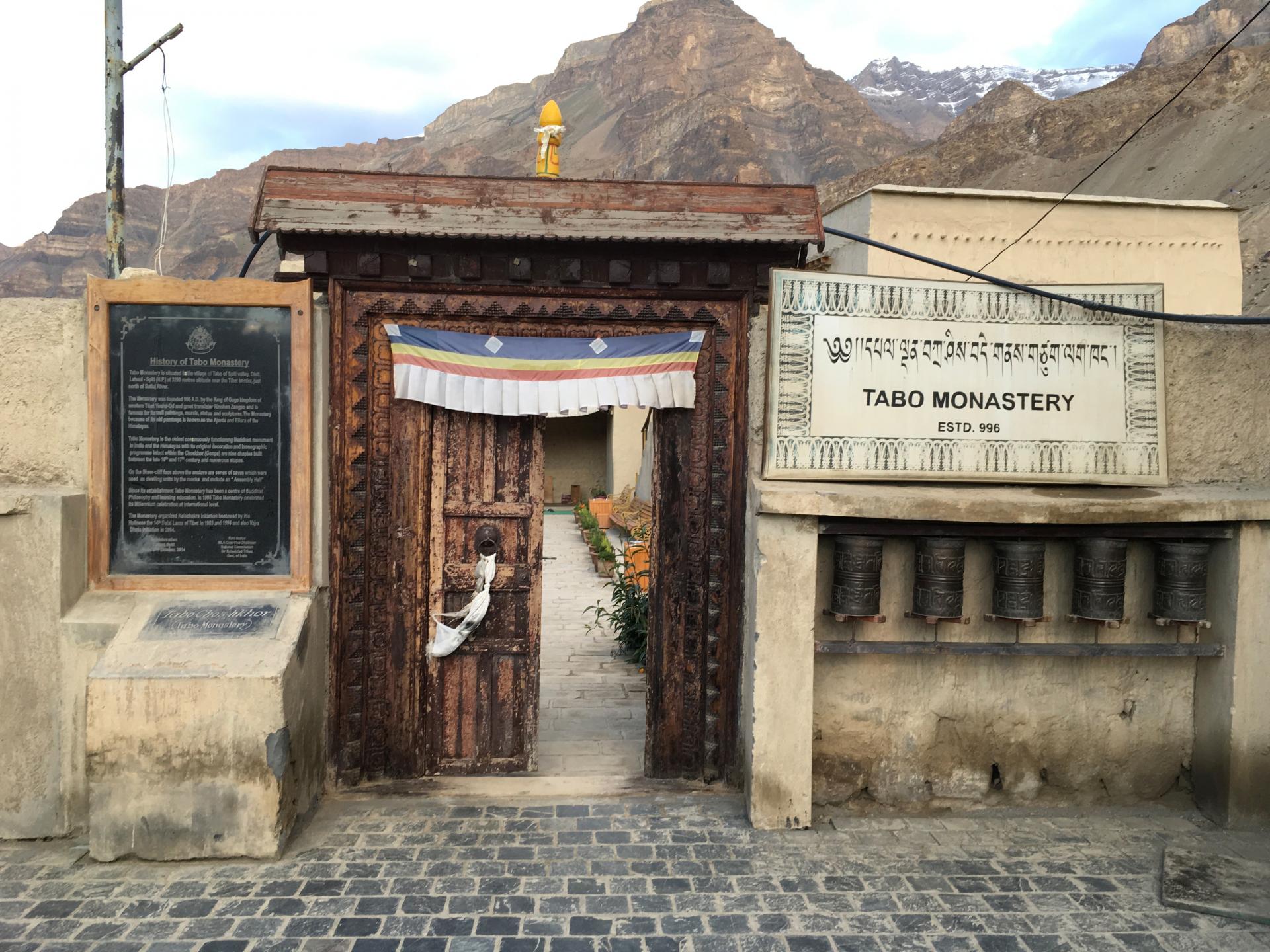Historical background
Tabo Monastery was founded by the Buddhist king and royal lama Yeshe Ö (Tib.: Ye shes ‘od) in 996 A.D. and carries the Tibetan name ‘Place of Happiness’ (Tib.: dPal ldan bkra zhis bde gnas gtsug lag khang). The renovation inscription in the main temple says it was renovated 46 years later by Yeshe Ö's grandnephew, the royal priest Jangchub Ö (Tib.: Byang chub ‘od). These royal patrons, the kings of the Purang Guge kingdom, were descended from the ancient Tibetan monarchy. Their ancestors migrated to western Tibet in the 10th century. By the end of the 10th century, their territory stretched from Ladakh to Purang and included all of western Tibet. Successive members of this dynasty built many monasteries along the trade routes linking the far corners of their kingdom.
Political legitimacy and cultural integration
The intimate connection between trade and religious establishments is a well-known phenomenon in the history of Indian Buddhism. The kingdom of the kings of Purang-Guge, from Ladakh to Mustang, was connected by a dense network of trade routes facilitated by the strategic placement of a large number of temples directly controlled by the royal family and their noble supporters. Tabo was a ‘daughter’ monastery of Tholing Monastery in Ngari, western Tibet.
The contribution of this dynasty to the re-establishment of Indian Mahayana Buddhism in Tibet was so great that it is known as the second spreading of Buddhism (Tib.: phyi dar), and the principal personalities are well recognised in Tibetan history. They so skillfully integrated political, religious and economic institutions that throughout the 11th century these monasteries were unparalleled in their artistic, literary and philosophical achievements.
The themes of political legitimacy and cultural integration are written large on the walls of the Tabo main temple. An analysis of the names and costumes of the monastic community (in the entry hall on the north wall) and the aristocracy (on the south wall) demonstrates the importance of the local culture at the time Tabo was founded. The main temple at Tabo was a royal monument and its decorative programme was based on the ideology of its patrons: legitimacy, status and piety.
Centre for translation and learning
King Yeshe Ö was assisted in his missionary activities by his preceptor, a Tibetan lama from western Tibet who became known as the Great Translator Rinchen Zangpo. He earned his title because of his prodigious activities of translating Sanskrit Buddhist texts into Tibetan.
According to the Blue Annals, many Indian pandits came to Tabo to learn the Tibetan language. The monastery served as a centre of translation and learning, where Indian pandits met their counterparts, learned Tibetan, and contributed to the massive intellectual and cultural process known as the second spreading of Buddhism. Translations were always conducted by a team of Indian and Tibetan scholars. The scholar Ngo Lotsawa Lodan Sherab (1059–1109), famous for his works on the Mahayana and logic, spent also some years at Tabo.
As its geographical position would indicate, Tabo served as an intermediary between the Buddhist communities of India and Tibet. Likewise, the art which was created there used Indian forms in conjunction with Tibetan wall texts in the context of a newly evolving ritual activity, usually described as Indo-Tibetan.
And Tabo Monastery was also very much a place of religious studies.
Political setting
From the 17th century through to the 19th century Spiti was often a political pawn of its larger neighbours Bashahr, Kulu and Ladakh.
The extremely distressed state of the manuscript collection (the so-called Tabo Kanjur) suggests that Tabo must have been the scene of some violent confrontations during its long history. The first of these, some time prior to 1042, can only be inferred from the warning contained in the admonitory inscription against harming the monastic community.
The attack on the assembly hall in 1837 is recorded by an inscription and confirmed by the still visible damage to the adjacent parts of the wall. Apparently, the local people attributed this destruction to ‘Rinjeet's troops’, possibly the followers of the Ladakh Rajah themselves.
After 1846, with British rule in the area, Spiti came to enjoy a century of relative tranquility and semi-independence. The India–China border dispute from the 1950s onwards reawakened awareness of the geopolitical importance of this isolated area. India claims six passes that form the boundary between the two countries, while China claims they are within her territory.
It is likely that Spiti always had to cultivate good relations with its more important neighbours on all sides. In Lahul, unlike Spiti, Kinnauri villages contain shrines to Hindu and local deities, as well as Buddhist sites.
